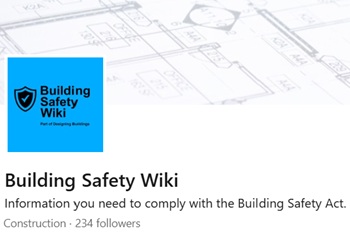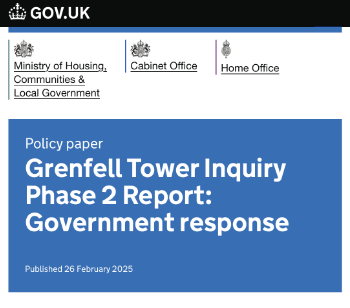Preparing a safer workspace
[edit] Introduction
In today's fast-paced work environments, it is not only a moral obligation but also a legal responsibility to ensure the safety and well-being of employees. Accidents can occur without warning, which is why it is crucial for every workplace to have a robust and well-prepared first aid plan in place.
Imagine a scenario where employees feel secure and confident in handling emergencies, from minor injuries to critical situations. The ability to provide immediate and effective first aid can significantly impact outcomes. This guide will walk you through practical steps to create a safe workspace where your team's well-being takes precedence.
This blog will explore a comprehensive approach to workplace safety and first-aid readiness. We will delve into the process of identifying and assessing potential risks specific to your unique work setting. By understanding these risks, you will be better prepared to establish protocols that ensure a prompt and efficient response in times of crisis.
Without a well-trained and empowered emergency response team, no effective first-aid plan is complete. We will discuss the importance of nurturing a team of individuals who can step up and take control during emergencies, providing the necessary support until professional help arrives. Additionally, you will learn how to map out evacuation routes and assembly points, ensuring a seamless and orderly response.
[edit] Assessing workplace risks
In order to prepare for emergencies in your workplace, it is imperative first to identify potential hazards. Take a close and careful look at your surroundings, including machinery and layout, and identify any areas of concern. Analyse historical data on workplace injuries and accidents to better understand common risks. This risk assessment will serve as the foundation for developing an effective first-aid plan.
[edit] Creating a comprehensive first aid plan
In order to establish a well-prepared workspace, it is crucial to have a clear and comprehensive first-aid plan. To begin with, it is important to form an emergency response team comprised of trained individuals who can take charge during crises. It is essential to develop protocols that outline step-by-step procedures for various types of emergencies, ensuring everyone knows their role. It is also important to map out evacuation routes and designate assembly points so that employees know where to gather safely.
In addition, it is necessary to ensure that first-aid supplies and equipment are easily accessible. A strategically placed first aid kit, equipped with essentials like bandages, antiseptics, and scissors, is a must-have. Collaborating with local emergency services is recommended to ensure seamless integration between your workplace and external assistance.
Overall, creating a well-prepared workspace requires careful planning and attention to detail. There might be difficulties in constructing a first aid plan for your workplace, as addressing the dangers associated with each task can be challenging. In such cases, prioritise undergoing educational programs like a first aid at work course to learn how to create a workplace first aid plan effectively. By implementing these measures, you can ensure your employees' safety and well-being in an emergency.
[edit] First aid supplies and equipment
When it comes to first aid, it is crucial to have the right tools readily available. You should build a well-stocked first-aid kit that covers a range of potential injuries. It is important to consider the unique risks of your workplace and include specialised items accordingly. You should regularly check and replenish supplies to ensure the kit is always ready. Properly storing and labelling supplies will make it easy for anyone to locate what they need in a hurry. By following these steps, you can ensure that you are prepared for any emergency situation that may arise in your workplace.
[edit] First Aid training and education
In an emergency, knowledge is power. That's why offering basic first-aid training to your employees is important. By doing so, you empower them to respond effectively to accidents. Make sure to conduct regular workshops and drills to keep everyone informed and confident.
Consider providing CPR and defibrillator training as well. These skills can be life-saving in critical situations. It's crucial to raise awareness about common workplace hazards and teach employees how to handle them. From minor cuts to more serious situations, the ability to provide immediate first aid can make all the difference.
Remember, your employees are your most valuable asset. By investing in their safety and well-being, you not only create a more productive work environment but also show that you care about their health and safety.
[edit] Emergency communication
In times of emergency, effective communication is crucial. It is important to establish clear communication channels that employees can rely on. Within your emergency response team, designate roles to manage communication effectively. Utilise alarms, PA systems, or digital tools to ensure that important messages are conveyed swiftly. This will help to ensure that everyone is informed and can take appropriate action to stay safe.
[edit] Psychological first aid
During times of crisis, it's important to prioritise the emotional well-being of employees. One effective way to do this is by providing psychological first aid, which can help individuals cope with the aftermath of an emergency. It's crucial to offer resources for emotional support and encourage seeking help when needed.
To ensure that your team is equipped to handle stressful situations, consider training both employees and response team members in psychological first-aid techniques. This can provide reassurance and comfort during times of crisis and ultimately lead to a more positive outcome for all involved. Remember, taking care of mental health is as important as physical health in emergencies.
[edit] Review and testing
When it comes to creating a first-aid plan, it's important to remember that it's not a one-time deal. The plan needs to be regularly updated and tested to ensure that it remains current and effective. To do this, conduct thorough reviews of the plan periodically. Additionally, simulate emergency scenarios through drills to evaluate the plan's functionality. It's also important to gather feedback from employees and response team members, incorporating their insights to improve the plan over time. Remember, a well-maintained first aid plan can make all the difference in an emergency situation.
[edit] Legal and regulatory considerations
In order to ensure workplace safety, it's important to be aware of the regulations and laws that govern it. It's essential to familiarise yourself with these guidelines and ensure that your first aid plan complies with them. Always prioritise the safety of your employees while staying within legal boundaries. If you need clarification on something, seek professional advice to navigate complex legal matters. Remember, safety should always be a top priority in the workplace.
[edit] Conclusion
When it comes to creating a safe workspace, careful planning, education, and dedication are essential. You can start by assessing the potential risks in your workplace and establishing a comprehensive first-aid plan. It's also important to provide regular training and ensure that necessary supplies are readily available for emergencies. Regular reviews of your plan and effective communication add additional layers of preparedness. Additionally, staying informed about legal and regulatory requirements is crucial to maintaining a secure and compliant workplace.
Investing in first aid preparedness protects your employees and promotes a culture of safety and responsibility. By following the steps outlined in this guide, you're taking proactive measures to build a safer workspace where everyone can work with confidence, knowing that they are equipped to handle any situation that may arise. Your dedication to creating a secure environment sets the foundation for a workplace that prioritises the well-being of its employees above all else.
See also: First aid.
[edit] Related articles on Designing Buildings
- Accident book.
- Automated external defibrillator AED.
- Health and safety.
- Deleterious materials.
- First aid.
- Health and safety at work etc act 1974.
- Health and safety consultant.
- Health and Safety Executive.
- Health and safety file.
- Health and safety inspector.
- Health and safety policy.
- Near miss.
- Notification to HSE.
- Personal protective equipment PPE.
- Reporting accidents and injuries on construction sites.
- Site induction.
- Site safety.
- Work at height regulations.
- Workplace safety supplies.
Featured articles and news
Microcosm of biodiversity in balconies and containers
How minor design adaptations for considerable biodiversity benefit.
CIOB student competitive construction challenge Ireland
Inspiring a new wave of Irish construction professionals.
Challenges of the net zero transition in Scotland
Skills shortage and ageing workforce hampering Scottish transition to net zero.
Private rental sector, living standards and fuel poverty
Report from the NRH in partnership with Impact on Urban Health.
.Cold chain condensing units market update
Tracking the evolution of commercial refrigeration unit markets.
Attending a conservation training course, personal account
The benefits of further learning for professsionals.
Restoring Alexander Pope's grotto
The only surviving part of his villa in Twickenham.
International Women's Day 8 March, 2025
Accelerating Action for For ALL Women and Girls: Rights. Equality. Empowerment.
Lack of construction careers advice threatens housing targets
CIOB warning on Government plans to accelerate housebuilding and development.
Shelter from the storm in Ukraine
Ukraine’s architects paving the path to recovery.
BSRIA market intelligence division key appointment
Lisa Wiltshire to lead rapidly growing Market Intelligence division.
A blueprint for construction’s sustainability efforts
Practical steps to achieve the United Nations Sustainable Development Goals.
Timber in Construction Roadmap
Ambitious plans from the Government to increase the use of timber in construction.
ECA digital series unveils road to net-zero.
Retrofit and Decarbonisation framework N9 launched
Aligned with LHCPG social value strategy and the Gold Standard.
Competence framework for sustainability
In the built environment launched by CIC and the Edge.
Institute of Roofing members welcomed into CIOB
IoR members transition to CIOB membership based on individual expertise and qualifications.
Join the Building Safety Linkedin group to stay up-to-date and join the debate.
Government responds to the final Grenfell Inquiry report
A with a brief summary with reactions to their response.


























